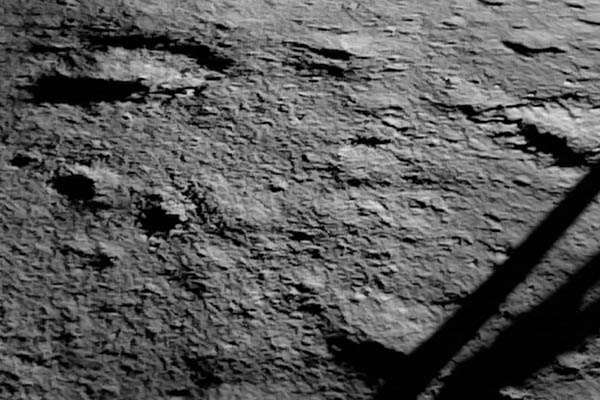
A portion of the Chandrayaan-3’s landing site. Photo courtesy of ISRO
The successful landing of India’s Chandrayaan-3 lunar mission on the dark side of the Moon has been hailed as a “scientific” achievement globally, making it one of just four nations—alongside the U.S., China and the former Soviet Union—to attain the goal. However, there are growing apprehensions that a Hindutva-inspired government would now use this success to boost its military prowess, especially in contrast with neighboring Pakistan and China. If previous moon landings are any indication, India’s success will boost nationalism and encourage its ruling party to become more aggressive in its dealings with the global community. The Daily Hindu has already hinted at this, stating “Chandrayaan-3’s success can benefit commercial, military and political sectors.”
When the U.S. reached the moon in the 1960s, they saw it as a means to “stage nuclear tests in space, use the moon to reflect signals for military or intelligence purposes”; a goal echoed by the Soviet Union. India, too, has hinted at creating a lunar base on the back of the road paved by Chandrayaan-3, with the potential for it to be a surveillance platform. It could also lead to greater shifts in geopolitics. In 1993, Russia provided India with cryogenic engines for rockets to vehement opposition by the West, particularly the U.S. Now, thanks to Washington desiring a regional foil to China, it is the loudest cheerleader for Delhi’s achievement.
Indian P.M. Narendra Modi’s joy over the success of the moon mission is undoubtedly motivated by the West viewing his nation’s new spacefaring status to keep checks on China, and indirectly Pakistan. This would likely also lead to states turning a blind eye to rights abuses in India, particularly against religious minorities. Last year, the U.S. Council for Foreign Relations observed that Muslims in India had faced discrimination in employment and education for decades and were disproportionately the victims of communal violence. “Prime Minister Narendra Modi and the ruling party have moved to limit Muslims’ rights, particularly through the Citizenship Amendment Act, which allows fast-tracked citizenship for non-Muslim migrants from nearby countries,” it noted. After the moon landing, this situation would likely worsen.
